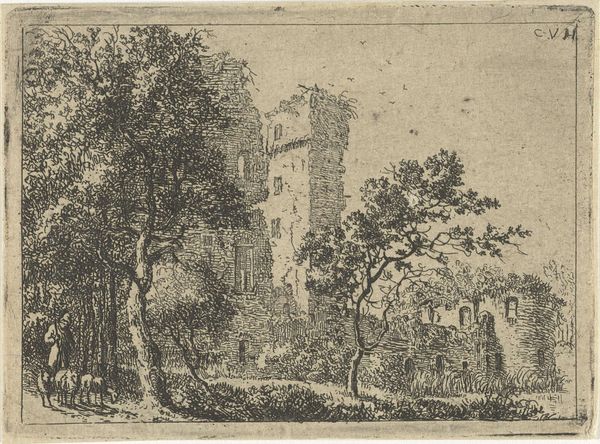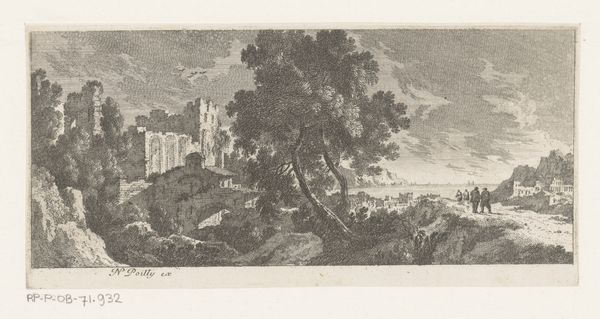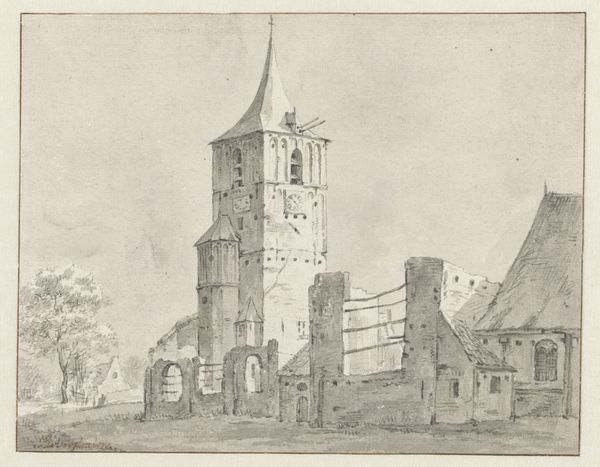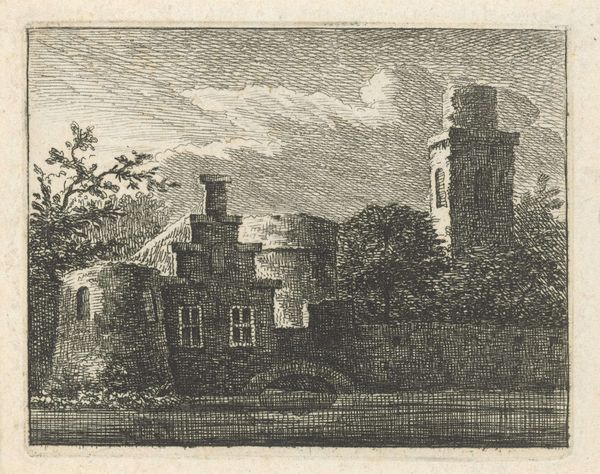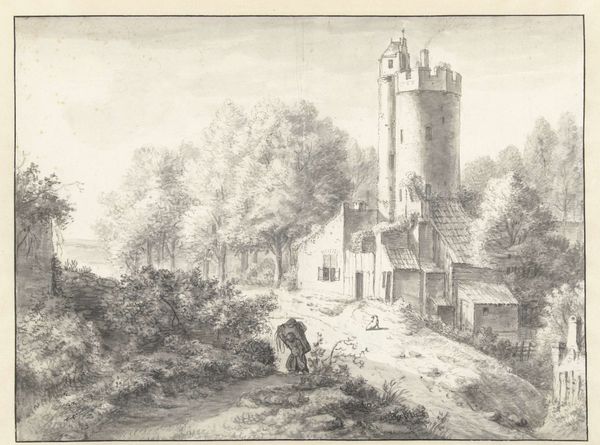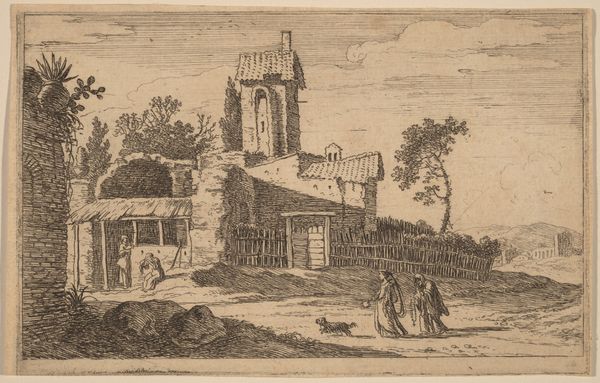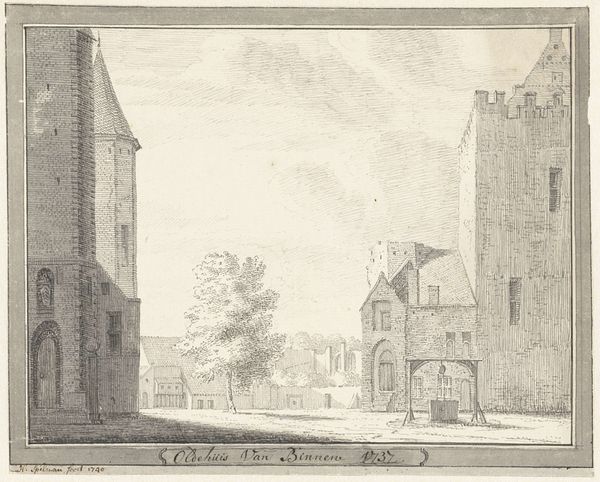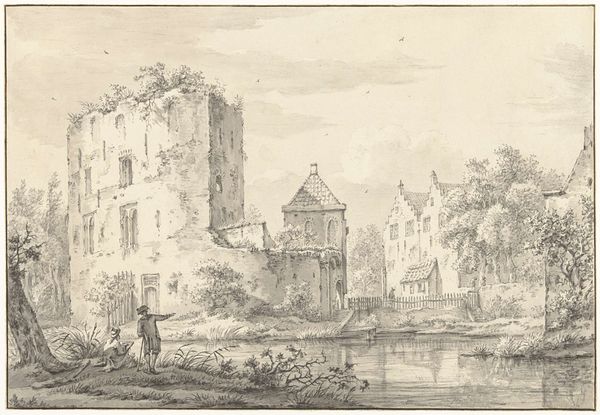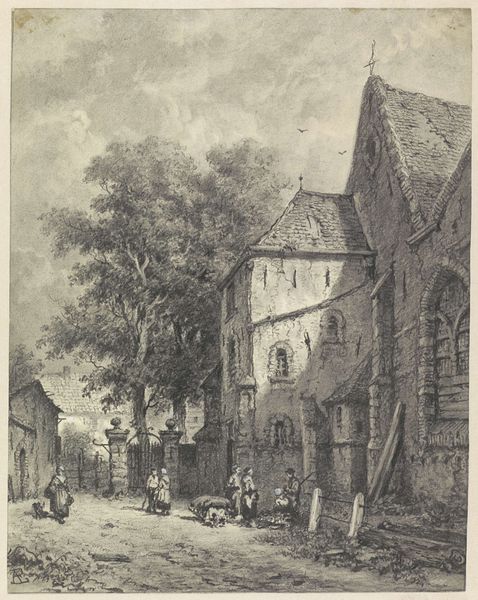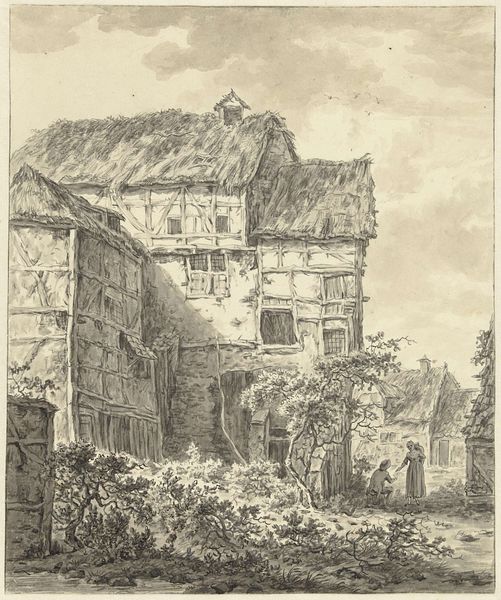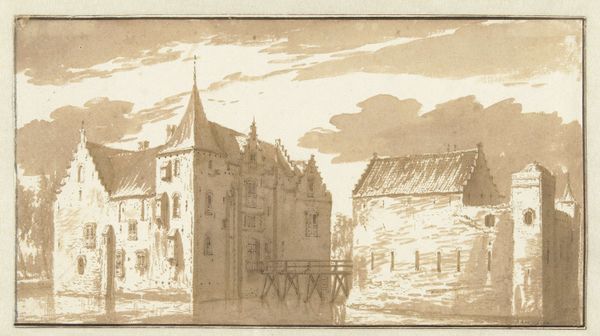
etching, engraving
#
neoclacissism
#
etching
#
landscape
#
cityscape
#
engraving
Dimensions: height 185 mm, width 228 mm
Copyright: Rijks Museum: Open Domain
Editor: Here we have "Dorpsgezicht met vrouw bij pomp," or "Village Scene with Woman at the Pump," an etching and engraving by Daniël Dupré from 1786. It has this serene, almost staged quality about it. What’s your take on it? Curator: It's a fascinating piece when considering the social and cultural forces at play in the late 18th century. Consider the rise of Neoclassicism. What's striking is how Dupré situates this "village scene" not as a raw depiction of reality, but as a constructed image of pastoral harmony. Editor: A "constructed image," you say? Curator: Absolutely. The composition is very deliberate. The scene almost feels staged, as you noted. Where would one typically see a woman so clearly presented near the village pump? This elevation suggests an idealization of rural life, something sought after by an increasingly urban, upwardly mobile art market. The museum’s role, of course, has historically been to both reflect and shape these values, and in this case to display an etching after paintings by Jacob van Ruisdael or similar which have promoted the harmony. The woman becomes almost allegorical. Editor: So, it's less about capturing a specific village, and more about embodying a feeling or an ideal? Curator: Precisely. Think about the function of art in public life, even back then. This image speaks volumes about how society perceived—or wished to perceive—itself. Notice the emphasis on order, cleanliness, and the integration of humanity with nature. This piece reflects very much the socio-political agenda for imaging the harmony, cleanliness and social stability within society. Editor: I see what you mean. It’s less a window into the past and more of a carefully crafted mirror. I'll definitely look at other works of the time to investigate how artists navigated representing everyday life versus constructed ideologies. Curator: A very insightful thought. Indeed it presents some critical lenses that museums grapple with even now when deciding how an artwork and period is presented.
Comments
No comments
Be the first to comment and join the conversation on the ultimate creative platform.

